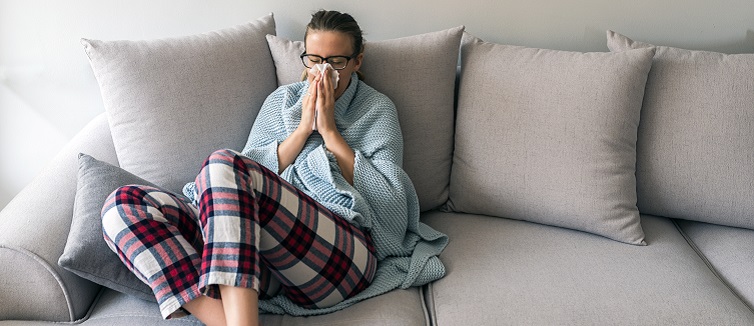This article was last updated on September 27, 2016
Fall is upon us and as the leaves start to change and the summer flowers begin to die off, we breathe a sigh of relief that our summer allergies will be gone until next year. Unfortunately, many people still find themselves sneezing and sniffling, even after these blooms are gone. That’s because fall allergies arise from different triggers including weeds and molds not common in the summertime. Before you toss your tissue box, read on to learn more about fall allergy triggers.
Symptoms of Fall Allergies
Fall allergy symptoms include:
- Runny nose
- Watery, itchy eyes
- Itchy nose and throat
- Coughing and wheezing
- Sneezing
Most seasonal allergy symptoms can be treated at home with over-the-counter medications like nasal sprays, antihistamines, and decongestants. If you find that your symptoms are especially bothersome, visit a doctor to discuss a more specific treatment plan. Nobody enjoys dealing with allergies, but with the help of your physician, you can help relieve some of the symptoms. Everyone reacts differently to certain medications depending upon the severity of their allergies.
Ragweed Allergies in the Fall
Ragweed is the most common allergen in the fall. The majority of individuals who are allergic to spring plants also find themselves falling victim to ragweed.
This yellow weed can produce one billion lightweight pollen grains which can travel through the air for hundreds of miles. This means that even if your yard is weed-free, you can still be exposed to these allergens. Ragweed can also be found on produce such as zucchini, bananas, and other fruits and vegetables.
This plant starts releasing pollen in August and its effects are typically felt through October.
Seasonal Allergies from Mold
When we think of mold, people typically envision spores growing in dark and dingy areas in bathrooms and basements. Contrary to popular belief though, most people have more exposure to mold that grows outdoors. Outdoor mold isn’t seasonally specific; however the fall provides a perfect environment for mold to grow in rain and dew soaked piles of leaves.
Dust Mites and Fall Allergies
It is estimated that around 20 million Americans are allergic to dust mites. Although these allergens are most common in the hot, humid summer months, they can be circulated back through your home when you first start using your heat in the fall.
Keeping a clean home year-round, wearing a mask when cleaning, and utilizing HEPA air filters will help to reduce dust mites in your home.
